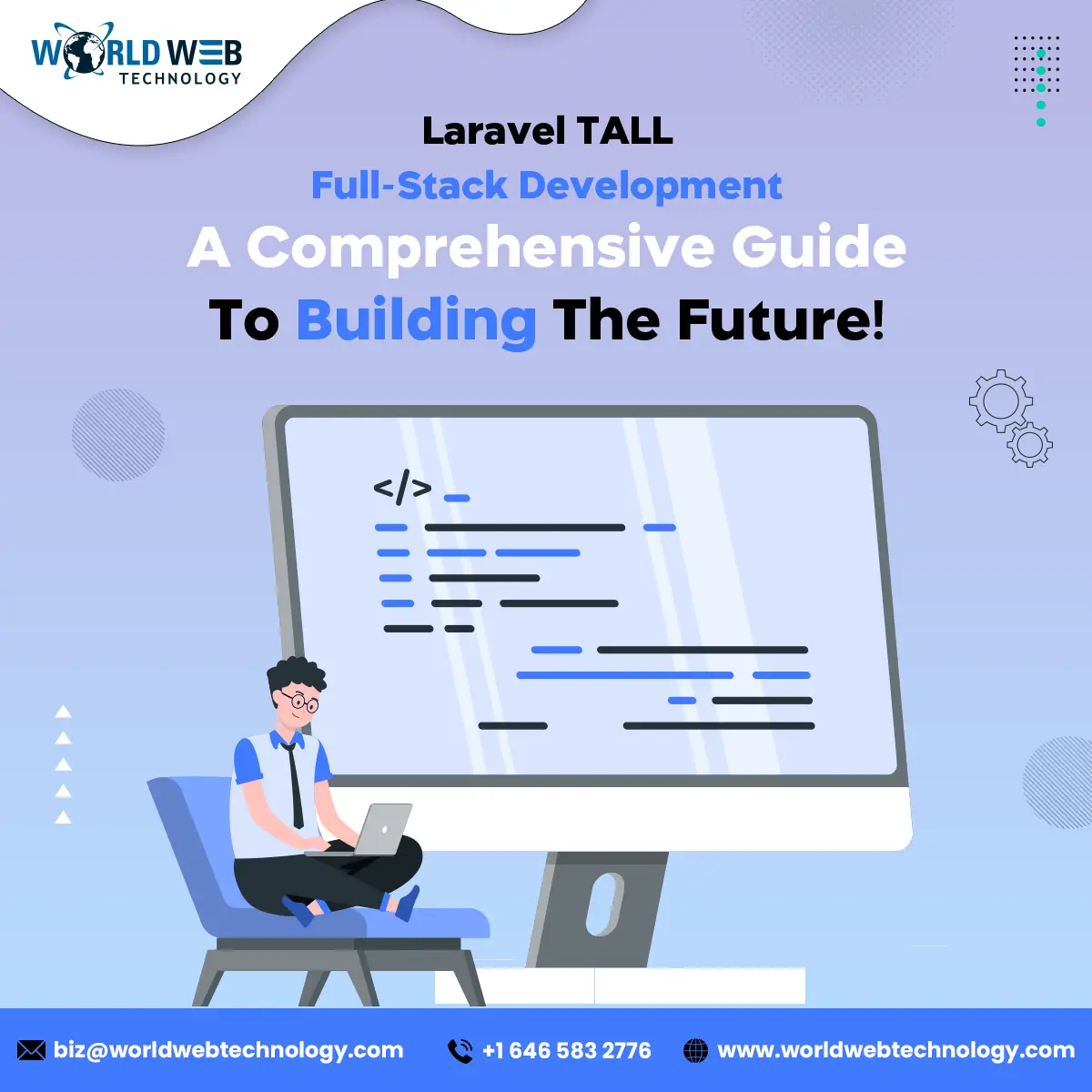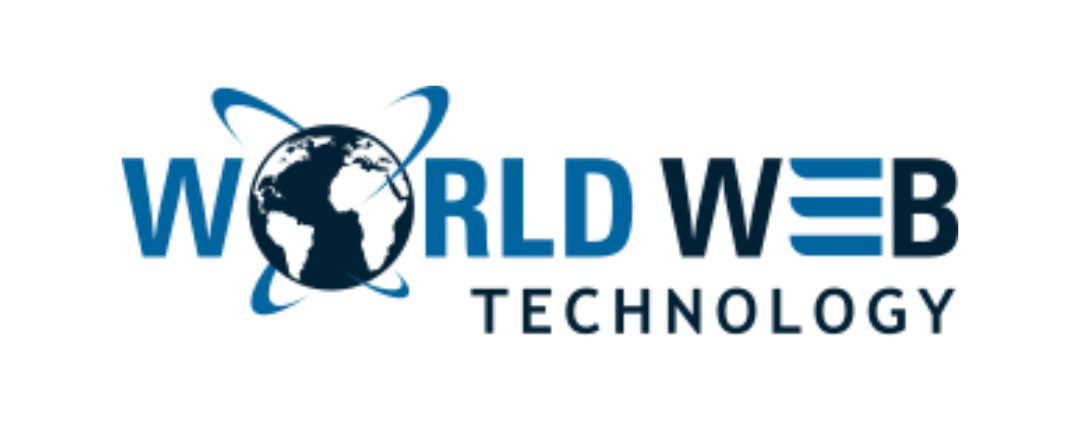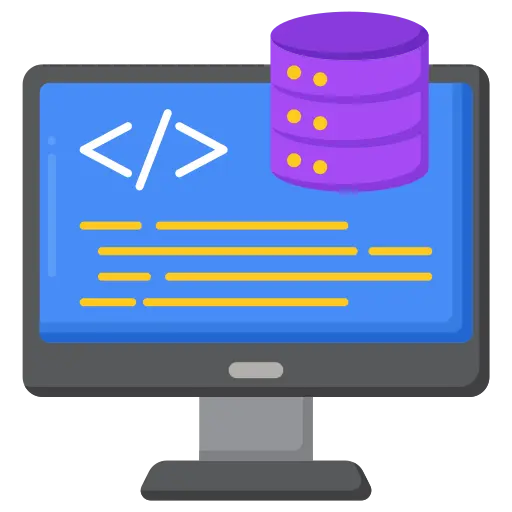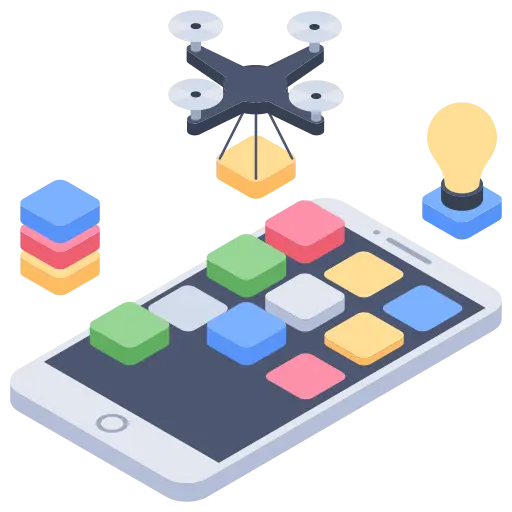Laravel TALL Full-stack development allows web developers to create robust web applications seamlessly. It encompasses both frontend and backend phases within the Laravel framework. This elegant syntax and comprehensive features leverage website developers to build the backend infrastructure, including ORM, middleware, and routing.
The full-stack web application development engine enables reusable, dynamic frontend views, while Laravel Mix simplifies asset management. This universal approach enables feature-rich app creation with cohesive integration between client and server. Laravel web application development offers a streamlined solution for crafting modern and scalable design and development experiences. It is possible due to Laravel’s native API development and authentication support and a flourishing ecosystem of packages.
What is TALL Stack?
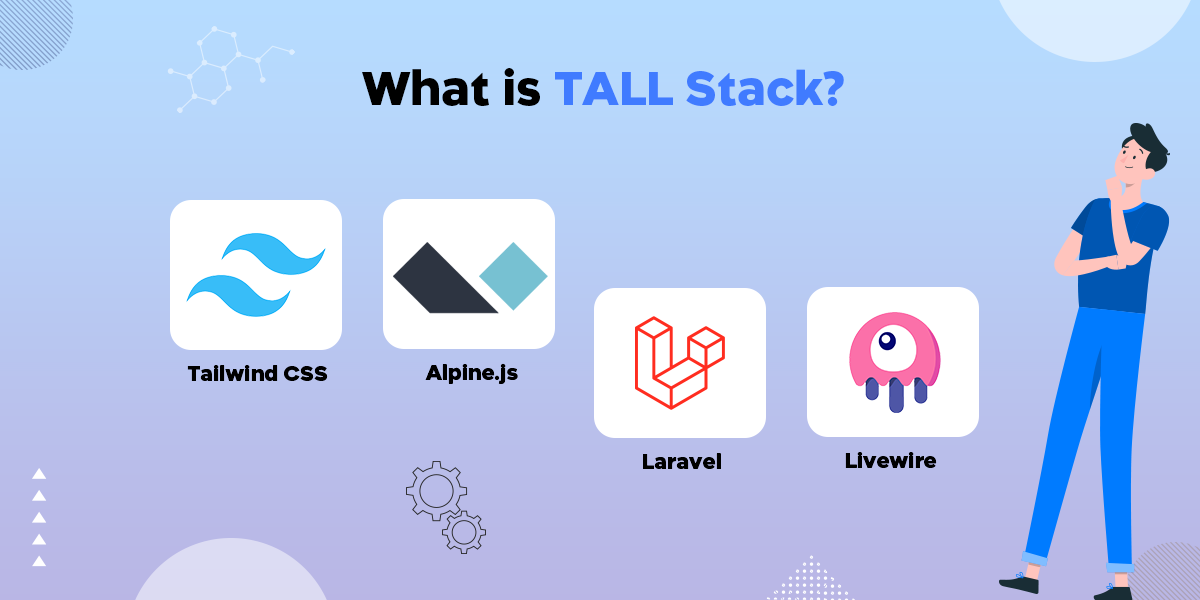
The TALL stack refers to technologies commonly used for building web applications. The TALL stack is an acronym, and each letter represents a specific technology:
- T – Tailwind CSS: It is a utility-first CSS framework that provides low-level utility classes for direct HTML markup styling. Developers compose intricate designs effortlessly as it enables rapid development.
- A – Alpine.js: This development framework is a lightweight framework made from JavaScript for building interactive UIs. Developers use it as a simpler alternative to larger frontend frameworks like Vue.js or React.
- L – Laravel: This PHP web application framework is known for its elegant syntax, developer-friendly features, and robust tools for building modern web applications.
- L – Livewire: A Laravel package enables TALL stack developers to build interactive user interfaces more reactively. It allows developers to write server-side code for handling user interactions. Additionally, it reduces the need for complex JavaScript.
Together, these technologies form the TALL stack, providing a full-stack solution for building web applications. Keep in mind that the landscape of web development technologies can evolve.
Advantages of TALL-Stack Development!
The TALL stack offers several advantages for PHP web application development. These advantages depend on the project requirements and the development team’s preferences. Therefore, hire Laravel developers wisely if you enjoy specific and potential benefits of the TALL stack and Laravel development services.
- Tailwind includes responsive utility classes, which make it easy to create HTML designs that adapt to different screen sizes.
- It also provides better tooling support in integrated development environments (IDEs), enhancing the development experience.
- Alpine.js is a lightweight framework, making integrating into projects easy without significant overhead. It uses a declarative syntax similar to Vue.js or React, making it intuitive for developers familiar with modern frontend frameworks.
- Laravel is well-known for its expressive yet crisp syntax. This framework makes it easy for developers to write and maintain code.
- Laravel Development Company in India prefers this framework as it provides comprehensive features. These features include an ORM (Eloquent), routing, middleware, and more, streamlining the development process.
- Livewire allows developers to build reactive user interfaces using server-side logic, reducing the need for complex client-side JavaScript.
- Livewire works seamlessly with Laravel. Its specific design allows developers to leverage Laravel’s features while building interactive components.
- The TALL stack provides a consistent set of technologies for both the front end and backend, which can simplify development and maintenance.
- Laravel has a solid and active community, providing support, tutorials, and a rich ecosystem of packages and extensions.
- It is designed with TALL-stack developer productivity in mind, aiming to provide efficient tools and workflows for building web applications.
The perception of advantages and disadvantages can vary based on project requirements, team expertise, and specific use cases.
Disadvantages of TALL-Stack Application Development!
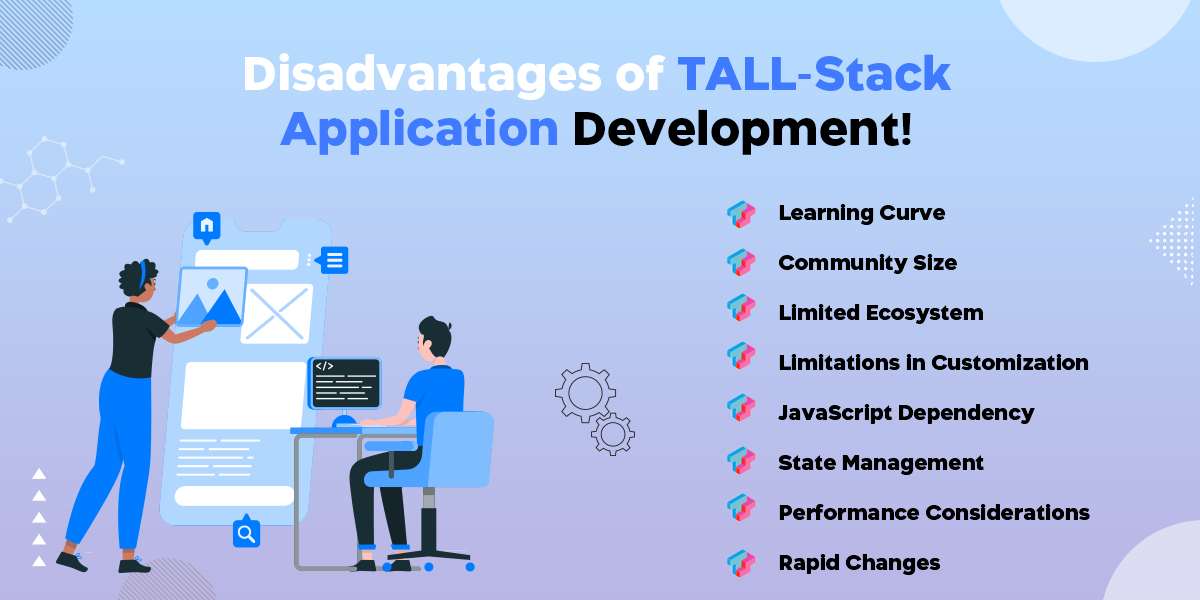
Like any other framework, the FULL-stack development also has a set of disadvantages. Here are some potential disadvantages associated with TALL-stack application development:
- Learning Curve: Beginners may find the extensive list of utility classes challenging. You may require time to grasp the conventions and syntax.
- Community Size: Laravel development services have a solid and active community. On the other hand, Livewire and Alpine.js aren’t as popular as other technologies. It has a smaller community than other frameworks, so that it might have community-driven solutions, resources, and fewer tutorials.
- Limited Ecosystem: While Laravel has a robust ecosystem, Alpine.js and Livewire may not facilitate as extensive a collection of third-party libraries and plugins. They are not more established frameworks like React or Vue.js. It can thereby limit the available resources and support specific functionalities.
- Limitations in Customization: The Alpine.js and Livewire design is lightweight and easy to use. They may, however, have some limitations compared to other feature-rich frontend frameworks. If you hire Laravel developers who require highly complex and customized solutions, they might find these limitations restrictive.
- JavaScript Dependency: Although Livewire allows for server-side interactions, scenarios might still require more client-side JavaScript functionality. In such cases, developers might need to integrate additional JavaScript libraries, potentially adding complexity to the project.
- State Management: TALL stack applications, especially those relying heavily on Livewire, may face challenges related to state management. Managing complex states across different components can become more involved than dedicated state management solutions offered by specific frontend frameworks.
- Performance Considerations: Depending on the project requirements, the stack’s emphasis on server-side rendering and Livewire’s approach to reactive UIs may not perform as well as entirely client-side rendered applications, especially in high-impact scenarios.
- Rapid Changes: The field of web development evolves quickly, and technologies can change rapidly. Depending on the pace of updates and changes in the TALL stack components, developers may need to adapt to new practices and features.
Considering these potential disadvantages in the context of your specific project goals, team expertise, and requirements is essential.
How to Install the TALL Stack Web Development?
Follow the instructions below to install the TALL stack:
- Laravel uses “Composer” for dependency management. Visit the Composer website to download and install it.
- Use Composer if you wish to create a new Laravel project. Install Laravel and run “Composer create-project –prefer-dist laravel/laravel projectName.”
- Laravel Mix requires Node.js and NPM. Install them by visiting the Node.js website.
- Use NPM to install Tailwind CSS and Alpine.js by running “NPM install -D tailwindcss alpinejs.”
- Run “npx tailwindcss init –p” to generate a tailwind.config.js file. It is how you initialize Tailwind CSS.
- Update your “webpack.mix.js” file to include the necessary Laravel Mix configurations for Tailwind CSS and Alpine.js.
- Run “composer require livewire/livewire” to install Livewire.
- Run “npm run dev” to compile your assets.
- Optionally, you can configure Livewire in your application by following the documentation.
- Start your Laravel development server with “php artisan serve” to run your Laravel app.
Your TALL stack is now installed and ready for development. Customize your project further based on your specific requirements.
The Future of TALL-Stack Development!
The TALL-stack future appears promising, with continued growth in popularity due to its simplicity, real-time features, and seamless integration. As Laravel, Alpine.js, and Livewire evolve, developers can expect enhanced performance, additional features, and improved TALL stack developer experiences. The stack’s ability to create dynamic, interactive web applications efficiently positions it for continued adoption and relevance in the ever-changing web development landscape.
How to Become a TALL Stack Developer in 2025?
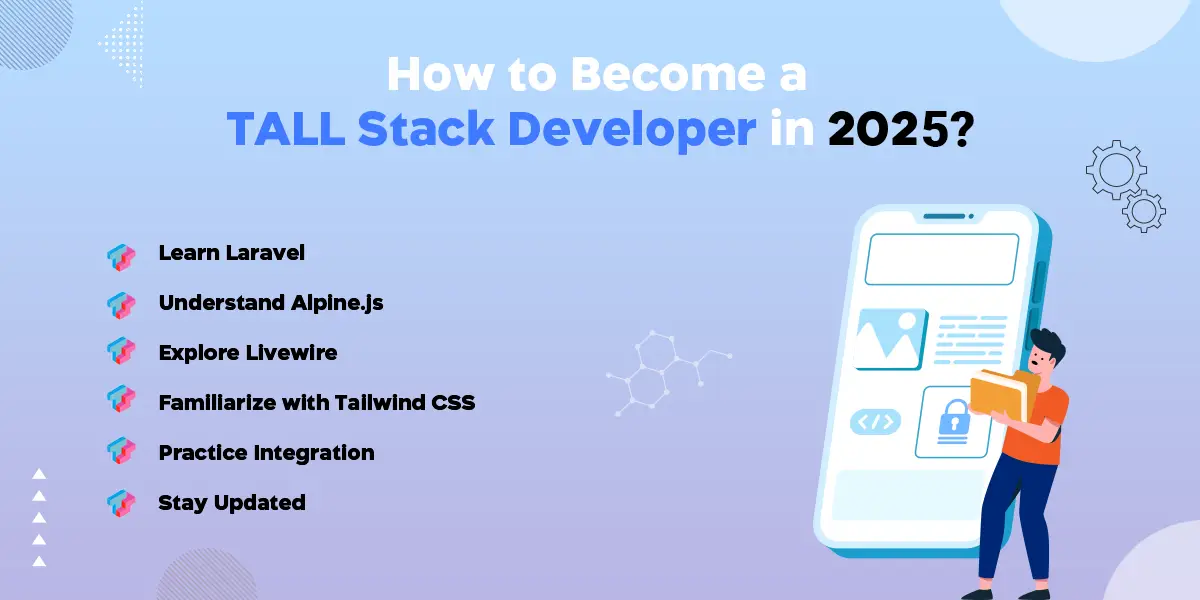
If you plan to become a TALL stack developer in 2025, here are the steps you must follow:
- Learn Laravel: Master Laravel, a PHP framework, for backend development.
- Understand Alpine.js: Grasp Alpine.js for frontend interactivity and simplicity.
- Explore Livewire: Learn Livewire for real-time features without extensive JavaScript.
- Familiarize with Tailwind CSS: Understand Tailwind CSS for efficient styling.
- Practice Integration: Combine these technologies in projects to gain practical experience.
- Stay Updated: Keep abreast of TALL stack updates and industry trends for continued relevance and growth as a developer.
Conclusion!
The TALL stack application development combines Laravel, Alpine.js, Livewire, and Tailwind CSS. It streamlines the creation of modern web applications. Mastering these technologies enables developers to build efficient, real-time, interactive solutions. Lastly, it ensures a robust skill set aligned with current PHP web application development trends.
Most Popular Categories
Discover top categories on our blog, featuring WordPress, PHP, eCommerce, and Shopify insights and tutorials.
Featured Insights
Immerse yourself in our passion for sharing the latest industry news, cutting-edge technologies, and insightful articles. Explore the depths of knowledge with us.

May 22, 2025
AI in Customer Support: Transforming Service in the Digital Age!

May 19, 2025



